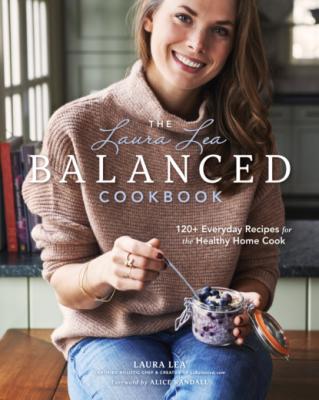The Laura Lea Balanced Cookbook. Laura Lea
Читать онлайн.| Название | The Laura Lea Balanced Cookbook |
|---|---|
| Автор произведения | Laura Lea |
| Жанр | Кулинария |
| Серия | Laura Lea Balanced |
| Издательство | Кулинария |
| Год выпуска | 0 |
| isbn | 9781951217112 |
Other uses: Use as a snack by the handful!
One of my favorite nighttime treats is a few
unsulphured apricots dipped in almond butter.
An easy appetizer idea is crackers or crostini
spread with goat cheese, sprinkled with sea
salt, and topped with an apricot.
Where to find: Bulk bins at health-food stores,
Whole Foods, Trader Joe’s, Amazon, nuts.com. I like Terrasoul brand.
Medjool dates: Nature’s candy! Medjool dates
are the answer to refined sugar–free prayers
around the world. These sweet, exotic delights
can now be found in almost every grocery
store, and they are so delicious. Although there
are several kinds of dates, I think the medjool
dates have the loveliest flavor. Their sticky
nature makes them a wonderful binder for no-
bake treats, or they can be soaked and pureed
and used as a caramel sauce. In addition to
their date-lightful taste (you see what I did
there?), dates are high in fiber, antioxidants,
potassium for electrolyte balance, vitamins
A and K for healthy skin, nails, and hair, and
trace minerals. You will see medjool dates
sprinkled throughout this book.
Other uses: Similar to unsulphured apricots,
I enjoy dates with a smear of almond or
peanut butter and a sprinkle of cinnamon
as a night-time snack. They also make for
fantastic pre- or post-workout fuel. I use them
almost daily to sweeten smoothies. Stuff them
with goat cheese or marcona almonds, wrap
each with a slice of bacon, and bake at 350° F
for 15 minutes or until bacon is crispy.
Where to find: Most grocery stores, health-
food stores, Whole Foods, The Fresh Market,
Amazon, Vitacost, Thrive Market
Coconut flour: Coconut flour is the first of
two flours I’m going to politely ask you to
invest in. There are only three flours used
in this book—oat flour, which is cheap and
easy, coconut flour, and almond flour. The
latter two are not cheap, and they’re not as
easy to find, but they’re worth it. One of the
primary struggles I witness, with women in
particular, is an uncontrollable sweet tooth:
the once-you-start-you-can’t-stop issue. This
is exacerbated when one is eating foods made
from highly refined flours, including many
gluten-free flours out there like tapioca or
potato. Coconut flour is made from the pulp
of the coconut as a by-product of the coconut
milk–making process. Coconut flour has a
high fiber content and is low-carbohydrate,
especially compared to grain-based flours.
As a result, goodies made from coconut flour
are very satisfying and filling, and I find they
don’t trigger the “more more more” desire that
traditional treats do. Coconut flour cannot be
substituted 1:1 for wheat flour, and it requires
a lot of liquid, as it is highly absorbent. It
also requires a lot of binder for the recipe to
stick together, and eggs are really the best
and only option. Instead of trying to convert
a traditional recipe to a coconut flour recipe,
I suggest starting from scratch with a recipe
made specifically for coconut flour. After
much experimenting with grain-free baking,
I found that using almond flour and coconut
flour produces a fabulous, tender, moist result
that is even better than the baked goods I grew
up with. I highly recommend investing in both
of these flours if you are someone with a sweet
Nutritional
yeast is a dried
fungus packed
with umami
and a tasty
cheeselike
flavor. Try it
on popcorn!
tooth who likes to bake. These will make you
feel so much healthier and you’ll enjoy the
process more as a result.
Other uses: Add 1 tablespoon of coconut
flour to smoothies for added thickness and
fiber. You can also mix 3 tablespoons of
coconut flour with 1 egg and a splash of milk,
sweetener, and a pinch of cinnamon or sea salt
in a small sauce pot. Heat to a simmer and
cook, whisking and adding liquid as necessary,
to reach a porridge-like consistency.
Where to find: Many grocery stores, health-
food stores, Amazon, Vitacost, Thrive Market
Almond flour: Dovetailing on coconut flour,
almond flour is the other grain-free flour I rely
on in baking and cooking, and you will see it
throughout the book. Almond flour is lower in
fiber and lower in carbohydrates compared
with coconut flour, but it is higher in fat and
protein. As a result, it contributes to a very
satiating baked good that you can have just
one of and feel content. One important
distinction to make is between almond flour
and almond meal. Almond flour is much more
finely ground than meal, and as a result, it
creates a product more similar to wheat flour.
Using almond meal will lead to a heavier,
grainier, and soggier result. I use a company
called Honeyville that
